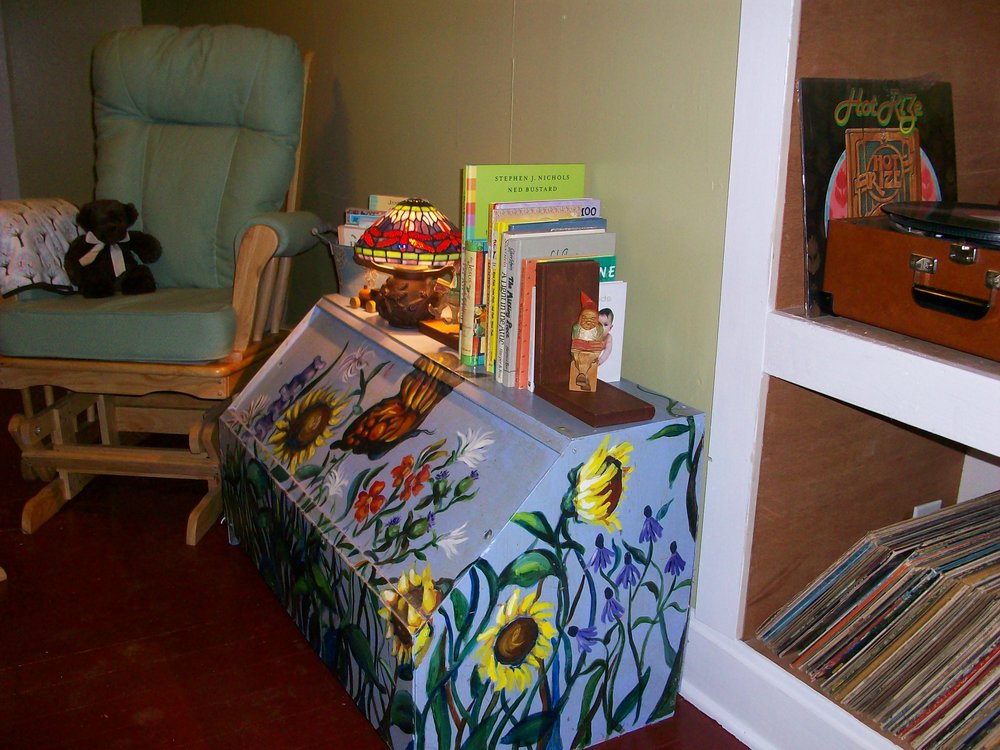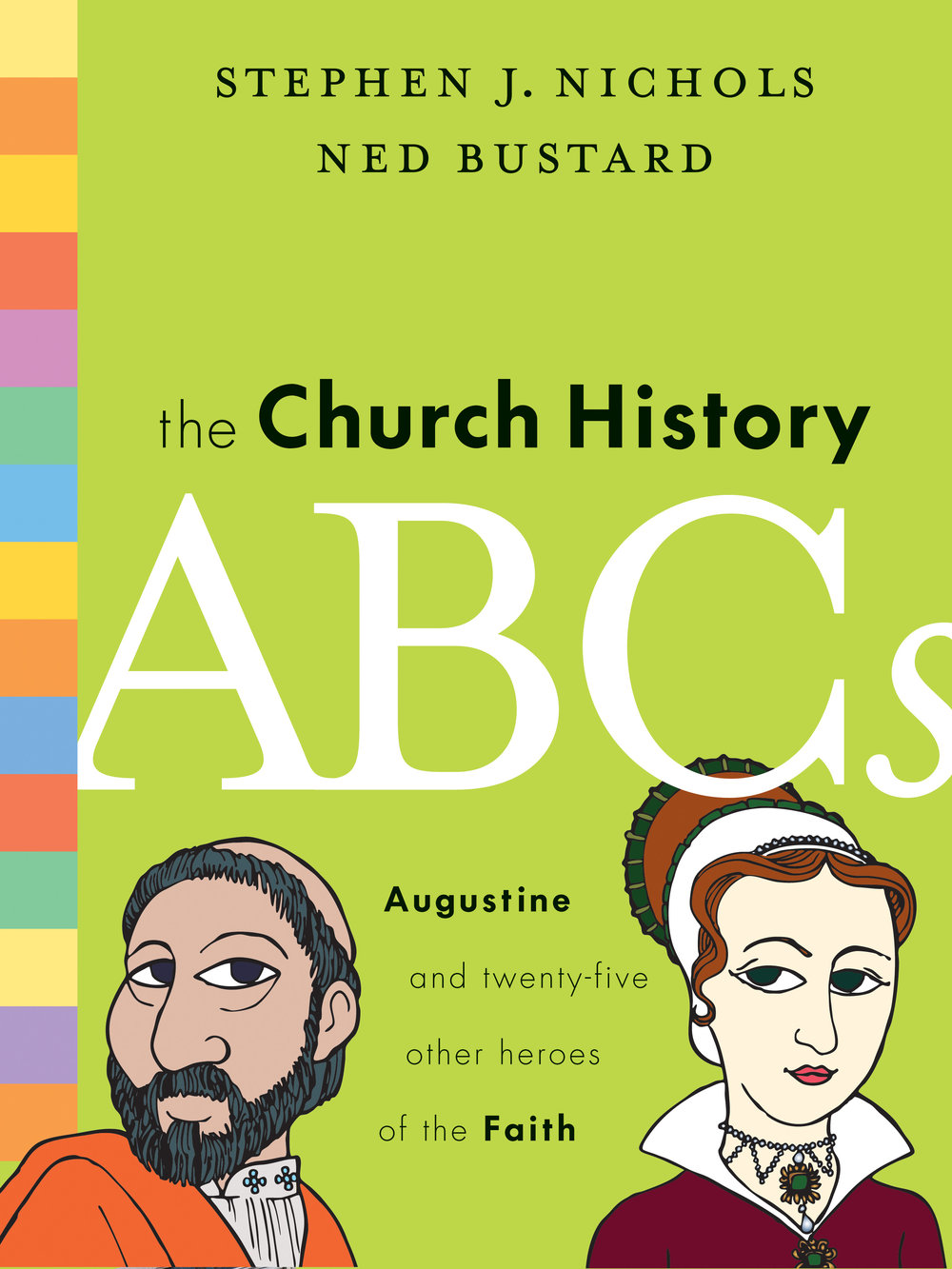I’m six months pregnant with my first child and nesting like there’s no tomorrow. Nesting takes many forms for me: cleaning, painting, sorting, shredding, and acquiring. A substantial portion of the process involves acquiring books — books about pregnancy, nutrition, labor and birth, baby development, philosophies of child-raising, and how to love a child as part of our family, our church, our neighborhood, and the world.

Selecting books for kids is a tricky business — they’re not all good. What will she learn? How will she see the world? Something my husband Kenny and I have discussed at length and keep coming around to is that we want her to know she’s part of a story. Little Girl will be entering a world of relativism and a culture with conflicting signposts. We want her to know that she is stepping into a big, meaningful story, and that she is telling a story of her own. As Walt Whitman says, “The powerful play goes on and on, and you will contribute a verse.” We want her to know the life she is living is significant, and that she will shape culture.
This is why Stephen J. Nichols and Ned Bustard, the creators of The Church History ABCs, had us at the introduction:
The people of church history are also very special to you. Their story is your story. Their story also tells you something about you. The Bible tells us that we all belong to one big family, the family of God. And there are a lot of stories to be told in this big family.
Yes, indeed. As we raise a little person and help her see what’s good and lovely and true, we want her to have the stories of church history in her head — a frame of reference that includes stories of God at work. Not only decades but centuries and millennia before she was a twinkle in our eye. It gives me courage to remember that God preserved the church, in all of her messes and high jinks and horrors, through stacks and stacks of stories.
When I pulled The Church History ABCs out of the bubble wrap, the first thing I noticed was that it was big. Longer than from my wrist to my elbow, and very colorful. I’m sitting in a coffee shop as I write this essay, and people can’t help but to look at my book. It’s as big as my laptop, with lots of visual and informational nuggets on every page: very browsable. My husband noticed it, too. He nabbed it, and it took two days for me to get it back. It’s the kind of book I can envision a kid sprawled out on the floor with on a rainy day. Each page has a story about a notable person in church history, a cartoony illustration of the person, and a couple of other collaged pictures that note key details of the person’s story. Well, mostly key details. I felt a deeper kinship with Jonathan Edwards upon finding out that his delight in God’s person and creation included a passion for chocolate. And fortunately for the creators of The Church History ABCs, church history has lots of people with names that start with the difficult letters, like “X” (Francis Xavier) and “Z” (Zwingli).
The Church History ABCs is laudable for its wide-ranging consideration of those who have affected church history. It includes people from very early church history — Ignatius and Tertullian — up to missionary Florence Young who died in 1940. It includes a number of women such as Lady Jane Grey; she’s one of many noteworthy female saints (no Disney princesses here) in this book. I love that Nichols and Bustard went beyond theologians and missionaries and included musicians like Vivaldi, who composed to the glory of God, and Monica, Augustine’s praying and faithful mother.
 This is a book that can grow with a child. You could buy it for a four- or five-year-old, who would simply enjoy the pictures and the letters. Let’s take a tricky one — the letter “U.” In The Church History ABCs, “U” is for ukulele, unicycle, and Zacharias Ursinus. The page has a big letter “U,” Ursinus wearing a bear hat (to remind us of his bearish name), and a picture of a ukulele. An older child, or parents reading to younger children, will discover a bit more about Ursinus. He grew up in Martin Luther’s hometown, he went to Geneva and was taught by Calvin, and he was one of the authors of the Heidelberg Catechism because “many of the big ideas we talked about needed to be taught to children.” Then the authors include the first question of the Heidelberg Catechism:
This is a book that can grow with a child. You could buy it for a four- or five-year-old, who would simply enjoy the pictures and the letters. Let’s take a tricky one — the letter “U.” In The Church History ABCs, “U” is for ukulele, unicycle, and Zacharias Ursinus. The page has a big letter “U,” Ursinus wearing a bear hat (to remind us of his bearish name), and a picture of a ukulele. An older child, or parents reading to younger children, will discover a bit more about Ursinus. He grew up in Martin Luther’s hometown, he went to Geneva and was taught by Calvin, and he was one of the authors of the Heidelberg Catechism because “many of the big ideas we talked about needed to be taught to children.” Then the authors include the first question of the Heidelberg Catechism:
Q: “What is your only comfort in life and in death?”
A: “That I am not my own, but belong — body and soul, in life and in death — to my faithful Savior Jesus Christ. He has fully paid for all my sins with his precious blood, and has set me free from the tyranny of the devil. He also watches over me in such a way that not a hair can fall from my head without the will of my Father in heaven: in fact, all things must work together for my salvation. Because I belong to him, Christ, by his Holy Spirit, assures me of eternal life and makes me wholeheartedly willing and ready from now on to live for him.”
Sheesh, that’s big stuff for a kid! This is an ABC book? But I would love for my child to have this tucked away in her heart and mind. I would love, for that matter, to have it tucked in my heart and mind. Here's the last line of the bit about Ursinus, just after the catechism question: “Lots of kids have memorized this. You should give it a try.” Indeed. Memorization is a dying and unpracticed art in our culture of instantly available information — how bold to even suggest the idea to a child of the internet age. I do have Longfellow’s The Children’s Hour and Shel Silverstein’s Sick and Eighteen Flavors printed indelibly on my mind, and some passages of scripture. I guess we choose what’s worth keeping — I like that Nichols and Bustard throw in this nugget.
For those who want to dig deeper, each historical character has a more detailed biography at the end of the book. It’s a good introduction, even for adults. If you haven’t been to seminary or had a few classes in church history, you will probably learn some new things. I certainly did.
I began my soul-searching in earnest at age 10. Really. It occurred to me then that a good number of my years had gone by and that I would soon enter my teens and adulthood, and I should really start to consider why I existed and what everything meant. I grew up going to church, but I was aware that people around the world believed differently than I did. I’ve had people tell me that it was particularly precocious to start that thinking at 10, but I don’t think so. Kids are working out the same things as everyone else: death, life, meaning, suffering. You know, the big stuff.
So I started my research. I went to the school library and began looking for information about beliefs that were different from my own. I found a shelf that had a series of tall cartoony volumes that told about the lives of Buddha, Mohammed, Gandhi, Mother Teresa — representatives of various belief systems. Thus began my personal, formal investigation of faith, with big, informative picture books summarizing the big idea of each major worldview. Now The Church History ABCs will be shelved alongside those big, useful books that gave me my first impressions of various faiths. I’m glad that it’s here now, in time for my little one and many others to enjoy and tuck in among the books they love. What a fun, attractive, interesting first glimpse into some of the stories that comprise the Big Story.
Katy Bowser Hutson lives in East Nashville, TN with her husband Kenny and soon, their newborn daughter. She fills her days with books, friends, homemaking, writing, music, and a kid's jazz project called Coal Train Railroad.














